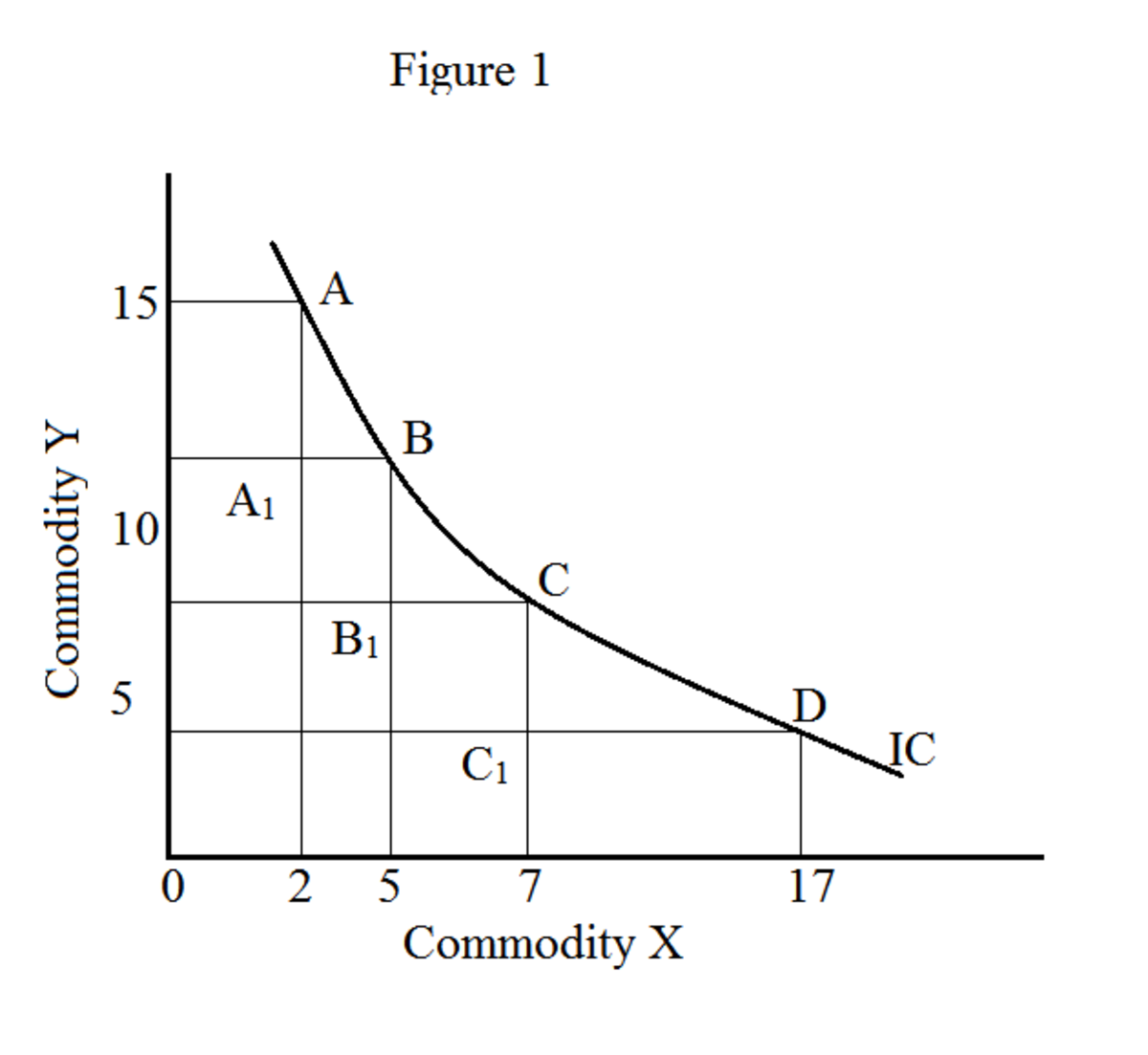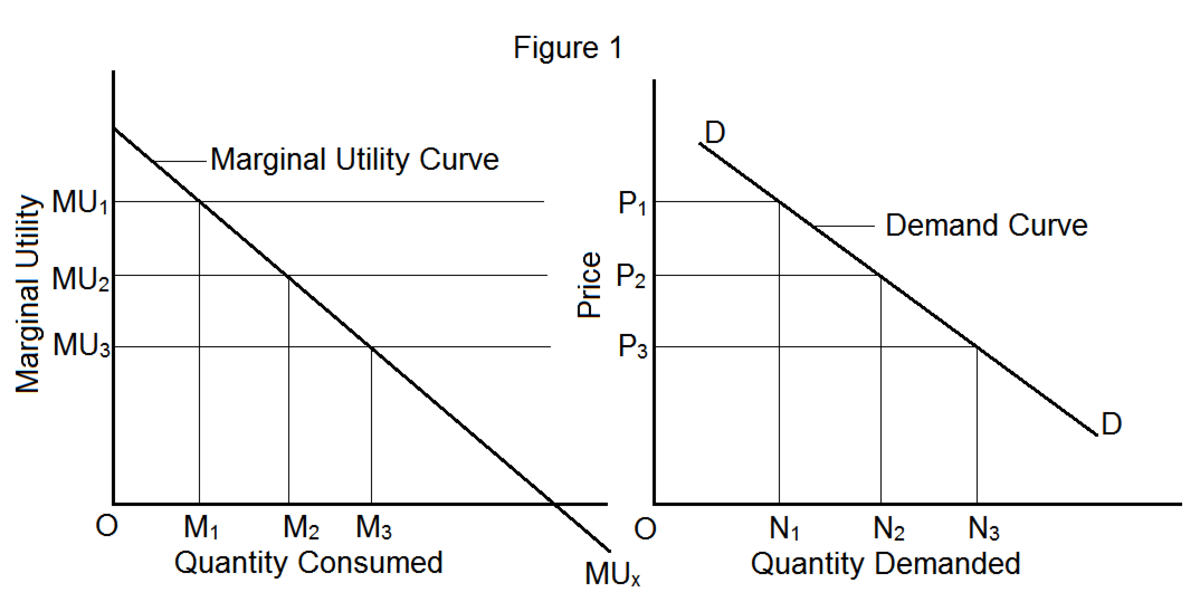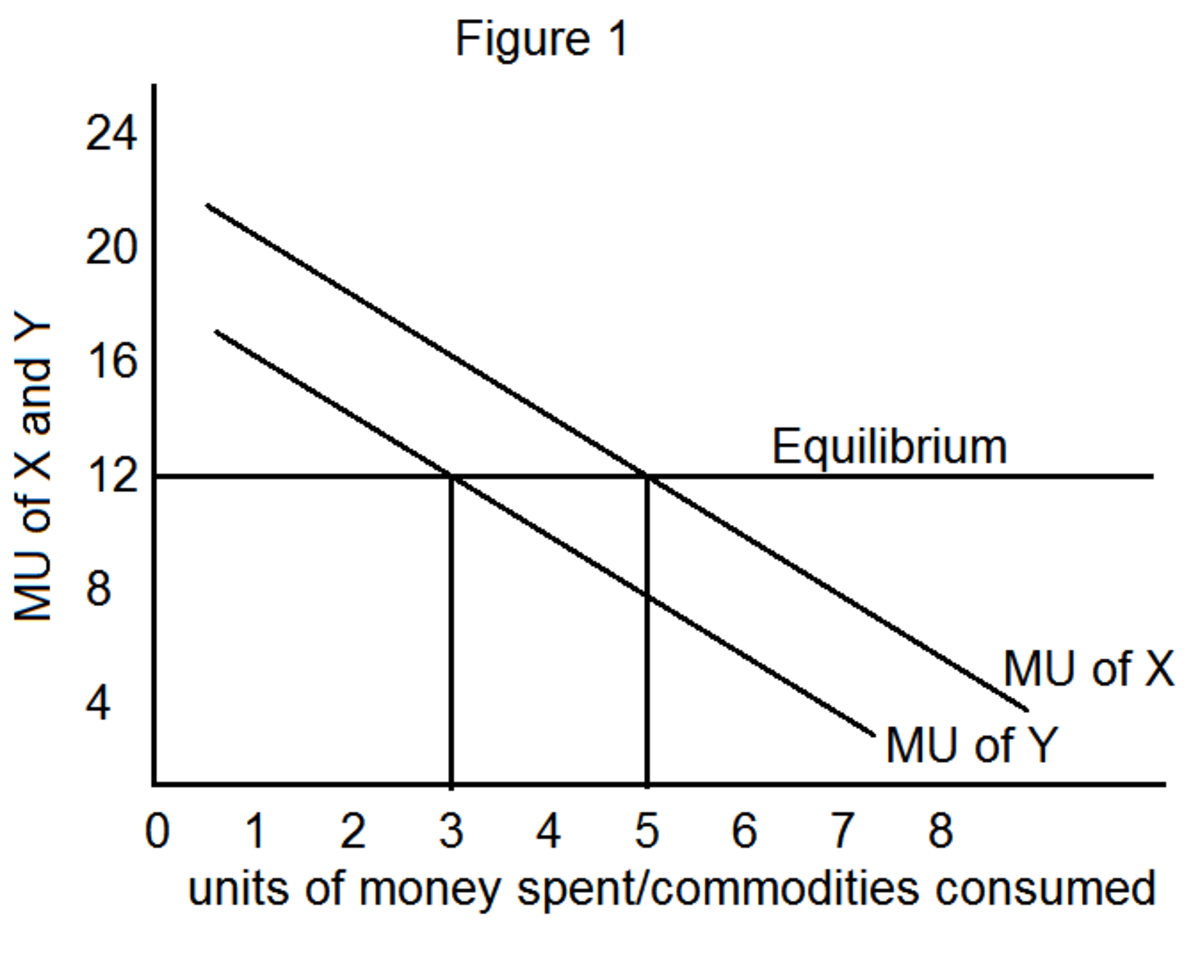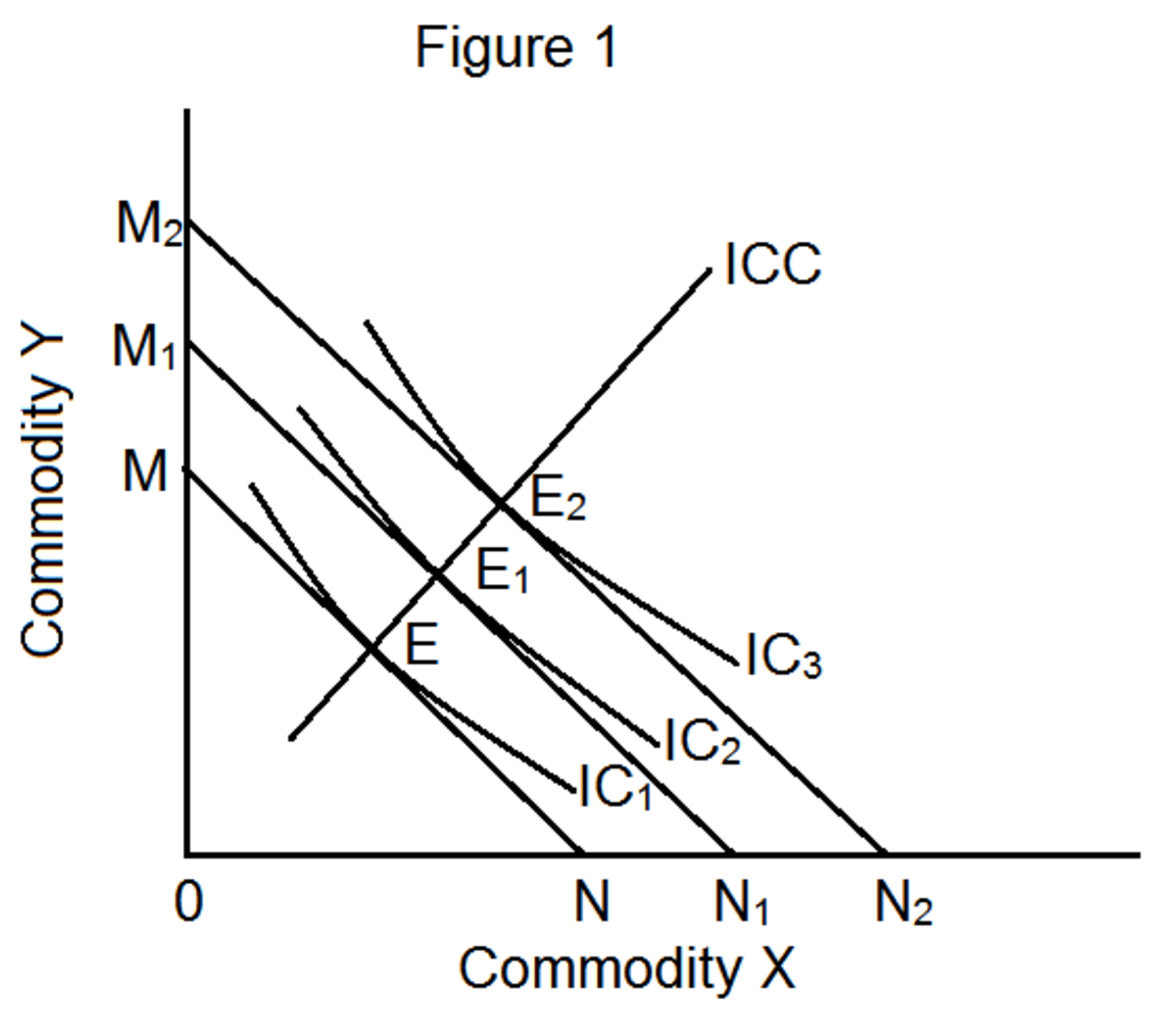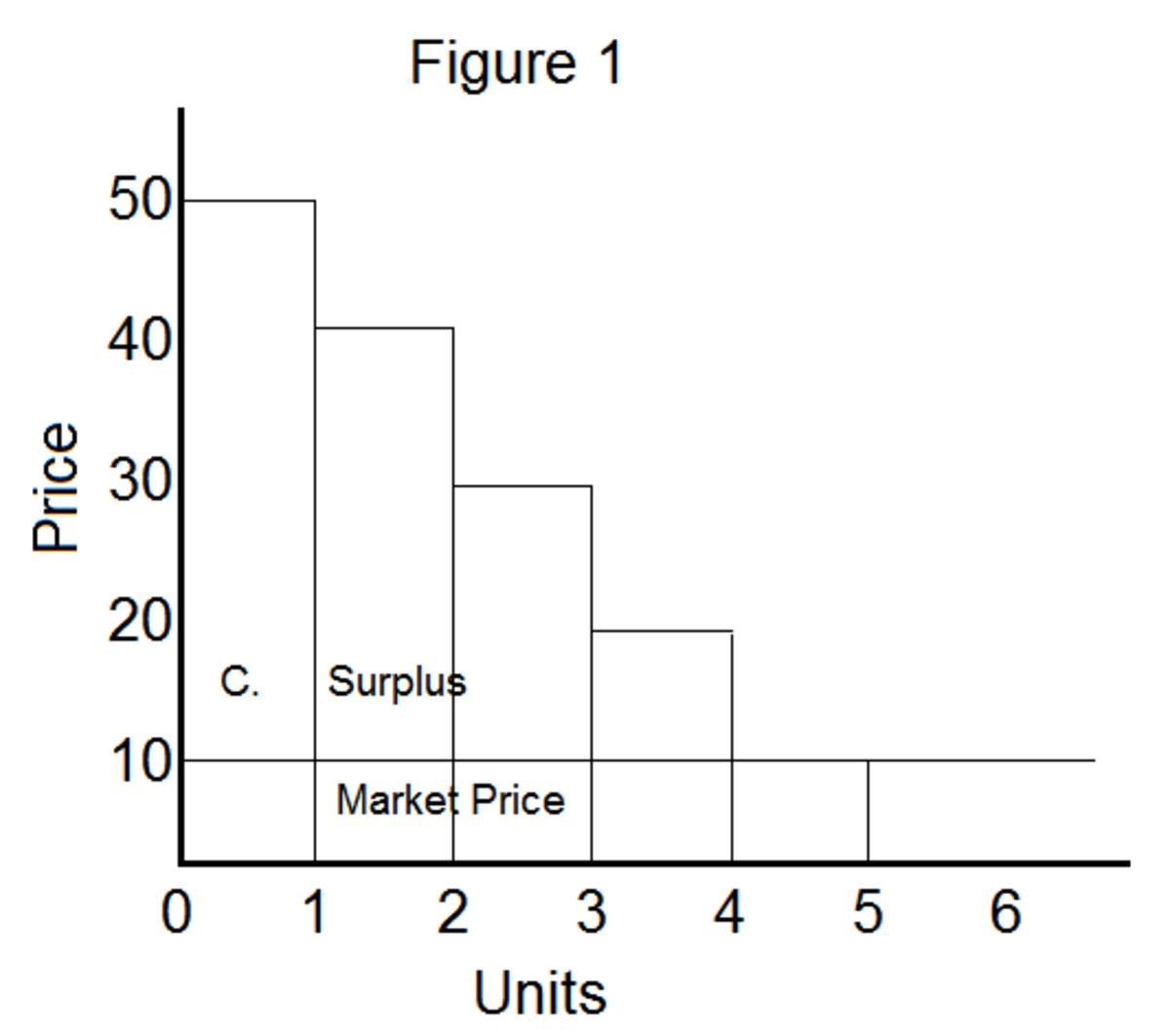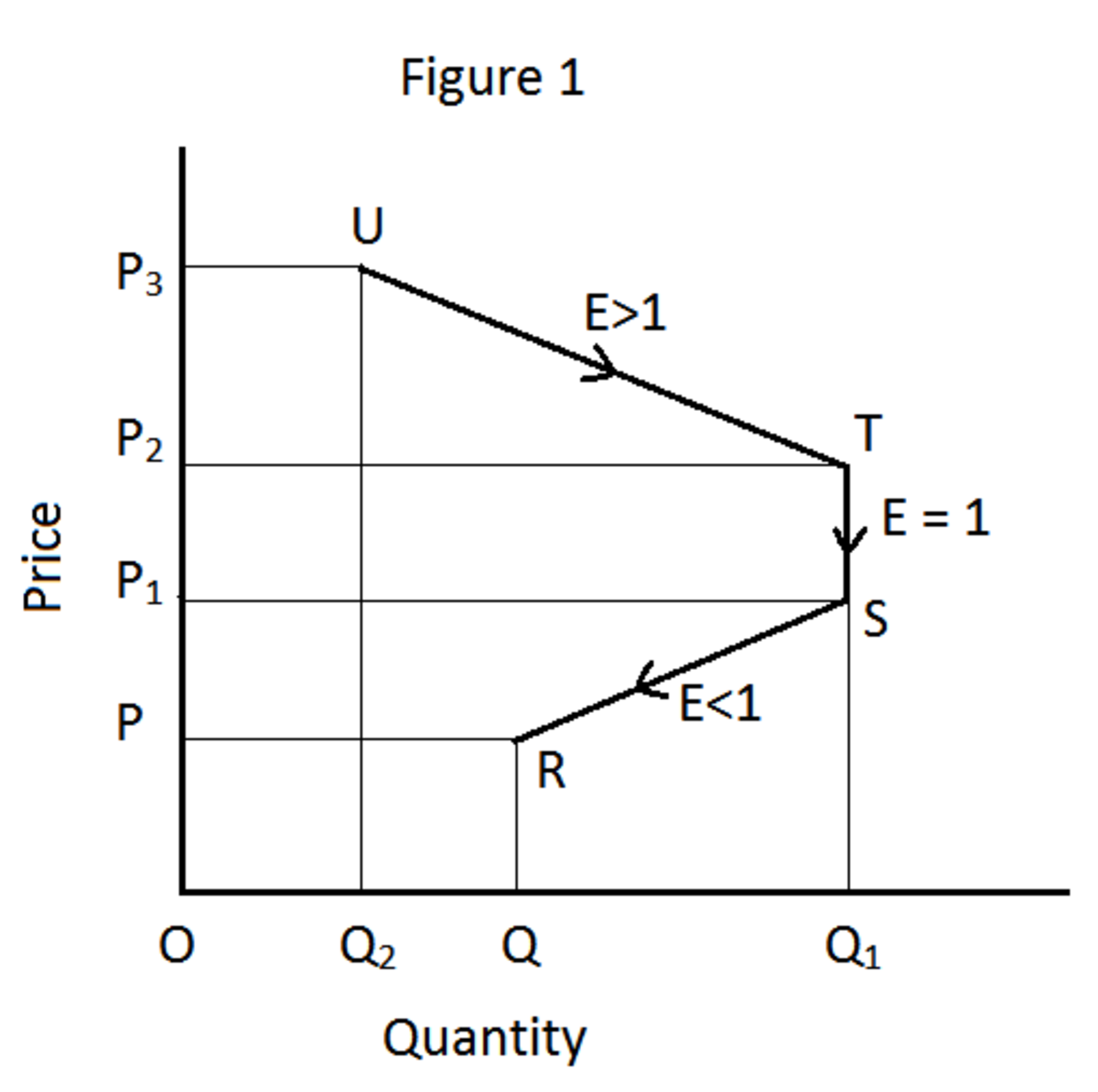THEORY OF CONSUMER BEHAVIOUR: THE MARGINAL UTILITY THEORY APPLIED TO A SINGLE COMMODITY
The marginal utility theory of consumer behavior assumes, the satisfaction people derive in consuming a commodity can be measured in unit called utils. Total utility, average utility and marginal utility could therefore be measured with this idea. Utility of a commodity is the satisfaction a household derives from consuming that commodity. Total utility is therefore the total satisfaction derived by the consumer from consuming different amounts of a product. Total utility curve arises initially attains a maximum and thereafter falls. This is because initially, as more units of a commodity are consumed, the total satisfaction increases, but after some level of consumption, it tends to diminish, when marginal utility falls to zero. Marginal utility is the additional satisfaction obtained from consumption of one more unit of a commodity. Marginal utility is change in total utility divided by change in quantity of a product consumed. Average utility is the average satisfaction derived from the consumption of a given quantity of a commodity. Average utility is the total utility divided by the quantity consumed. The total utility can therefore be obtained by multiplying the average utility by the quantity of a commodity consumed.
To explain the theory of consumer behavior, the following assumptions are important:-
i. That total utility is maximized i.e. the consumer is rational
ii. That the consumer has limited income
iii. The commodity in question obeys the law of diminishing marginal utility
iv. That the consumer is aware of the existence of some commodities and the satisfaction they give.
v. That the marginal utility of money is constant
With the above assumptions, the model used in analyzing consumer behavior by the utility approach can now be used. This treatment considers a single commodity; say mango. The utility schedule below is hypothetical. It shows that as the number of mangoes consumed increase, total utility rises. Everything else being equal, the more mangoes a consumer consumes in a day, the more satisfaction he gets. It can however be observed that the marginal utility of each additional mango per day is less than that of the previous one even though each mango adds something to the consumer’s satisfaction. See table below at end of the article.
The Law of Diminishing Marginal Utility
The marginal utility theory is based on the law of diminishing marginal utility. This law states that “other things being equal, the marginal utility (additional satisfaction) of a commodity diminishes as the quantity consumed increases” The explanation of the law has already been done and from the table above.
Equilibrium of the consumer
If the consumer were to pay for the mangoes, higher prices would be paid for higher marginal utilities and lower prices for lower marginal utilities. The consumer will be in equilibrium when marginal utility of a commodity, (in this case mango) is equal to its price. Stated differently, the consumer is in equilibrium, maximizing satisfaction, when the additional satisfaction obtained, from the last unit of a commodity equal the price the consumer pays for that commodity. The implication of this analysis is that the price level of a product tells its marginal utility level, so that at lower prices marginal utility of a product is also at that low level because the consumer consumes more for marginal utility to fall low to the price level. This is what the law diminishing marginal utility says. The price of a product rises because its marginal utility is high. The marginal utility is high because the consumer consumes less (if marginal utility diminishes when more is consumed, then by implication, marginal utility will be high when less is consumed). Quantity demanded of a product therefore fall when its price increases and vice versa. This offers an explanation as to why the normal demand curve slopes downwards from left to right.
A hypothetical Utility Schedule for Mango
Number of Mangoes Per Day
| Total Utility (TU) in utils
| Marginal Utility (MU) in utils
|
|---|---|---|
0
| 0
| |
1
| 30
| 30
|
2
| 50
| 20
|
3
| 65
| 15
|
4
| 75
| 10
|
5
| 80
| 5
|
6
| 80
| 0
|
7
| 75
| -5
|
8
| 65
| -10
|



